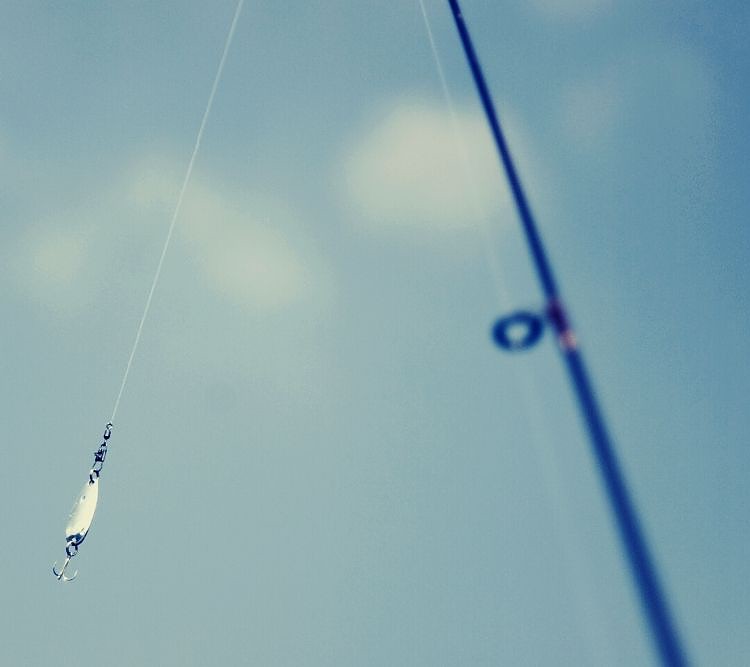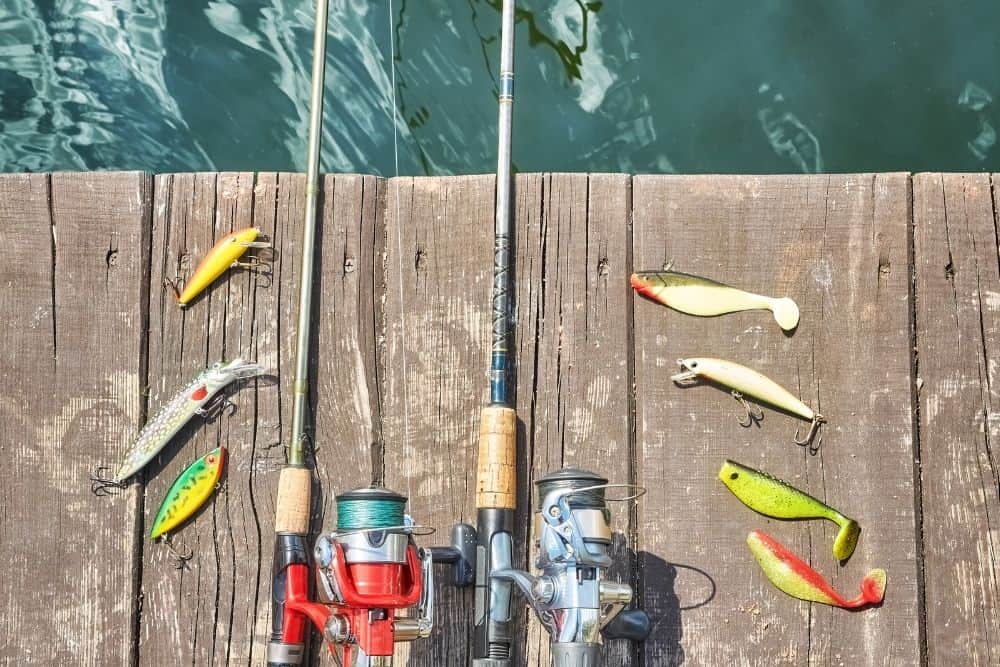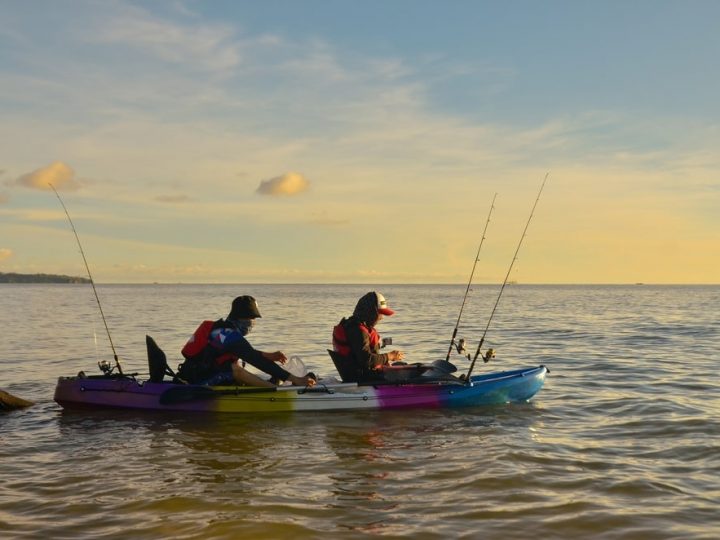If you’re fishing in the ocean, a large lake, or a river, your best bet may be to troll your line.
Trolling allows you to cover a greater area of the water by paddling up to several miles, dragging your hook and lure behind the boat.
But can you troll a lure from a kayak?
How do you determine the appropriate depth and distance for trolling bait?
Keep reading.
In this article, we’ll answer all of these questions and more.
Table of Contents
How Do You Troll Bait?
As mentioned above, trolling bait, trolling a line, and trolling a lure all refer to allowing your fishing line to drag behind as you move your boat through the water.
This movement mimics the movement of live bait, which may make it more attractive to any fish in the water. Trolling also allows you to cover a greater amount, so you have a better chance of coming in contact with more fish.
To troll bait from a kayak, you’ll need a rod holder to set your rod in while you paddle. Some kayaks, especially those made for fishing, may have a rod holder built-in. If your kayak doesn’t have a rod holder, you’ll want to buy one before hitting the water.
Trolling speed and lure depth are the most crucial components of trolling bait. The depth of your lure will depend on how fast you’re paddling. Paddling faster will keep the lure closer to the surface, while paddling slower will keep it further down in the water.
It may take some trial and error to figure out the appropriate depth and speed for a particular set of fishing conditions. Pay attention to the water conditions to figure out how deep your lure needs to be.
If you notice air bubbles, ripples in the water, and other evidence that the fish are active near the surface, try paddling faster to keep your lure higher. If you don’t see this evidence, or you’re fishing an area where fish tend to stay deeper, paddle slower to get your line down far enough.
It’s also worth noting that some fish, such as albacore and skipjack tuna, will be more attracted by the sounds of humming and thrashing created by a boat’s motor. Since kayaks don’t create this noise, you may have more trouble catching these types of fish.
If you plan to fish for albacore or skipjack, you have a couple of options. Use a kayak-specific trolling motor to push or pull you through the water, or paddle as part of a group of two or three other kayaks. Multiple kayaks working together are bound to create more of a disturbance.
The types of lures you will use may also depend on the water conditions, the types of fish you’re trying to snag, and your anticipated trolling speed. It may take some experimenting to figure out what works best. Some good basic lures to start with are crankbait and crappie jigs.
So we’ve discussed what trolling a lure is and how to do it from a kayak. But you may still have some questions.
Keep reading for more detailed information about lure depth and determining the ideal distance from your boat.
How Far Behind the Boat Should I Troll?
The trolling distance is called setback. The appropriate setback varies greatly depending on the type of fish, the water depth and clarity, the type of lures you use, and a number of other factors.
Again, determining the proper depth will probably take some trial and error.
In general, you should give your line plenty of distance in clear and shallow water, as well as when fishing near the surface.
If you’re having trouble getting bites, lengthen your line by three turns at a time until the fish start taking interest in it.
It may also be helpful to place the line at a diagonal instead of directly behind the boat. Generally, the fish will move outward and away from the boat rather than swimming in its wake, so you’ll have better luck catching fish if you give your lures more of a side placement.
Side planers and planer boards are extremely useful for this. For more information on using these with a kayak, check out this video.
How Do You Determine the Depth of Your Lure When Trolling?

As mentioned earlier, the depth of your lure will depend heavily on how fast your boat is moving through the water. It may also depend on how choppy or smooth the water is.
If the water is shallow enough, you can let out your line until you notice the tip of the rod bouncing as you paddle forward slowly. This bouncing rod tip means your lure has hit the bottom.
At this point, you can begin paddling faster and faster until you see the lure rising to the top of the water.
By comparing the speed at which your lure hit the bottom versus the speed at which it rose near the surface, you can estimate the approximate depth of your lure at different speeds.
If you’re not getting the bites you want, experiment with different speeds. By adjusting your speed, you’ll be automatically adjusting your lure depth, and both of these factors could make or break your success with trolling.
How Do I Make My Crankbaits Deeper When Trolling?

Again, the best way to adjust your lure depth is to adjust your speed. If your crankbaits aren’t as deep as you want them to be, start paddling slower. Adjust your speed until you estimate that they are the approximate depth you need.
If paddling slower still doesn’t drop your bait low enough in the water, you may want to add an extra sinker to the line. If you do this, however, keep in mind that you may have to paddle faster to keep the lures high enough.
Experimenting with different techniques, depths, speeds, lures, and water conditions is your best way to figure out what works and what doesn’t.
Even then, conditions may change from time to time, and you may find yourself experimenting with every fishing trip to discover exactly what works on any given day.
Conclusion
Trolling from a kayak is much like trolling from any other boat. Your speed, lure depth, and the types of lures you use are the most important factors of successful trolling. Other factors may include water depth and clarity as well as the type of fish you’re going for.
Though all of these variables may change with each fishing trip, you can troll with confidence by following the general tips outlined in this article.
Happy fishing!

Sarah Hood has been writing for Anchor Travel since 2021. When she’s not writing, she enjoys cooking, singing, and spending time in the great outdoors.



